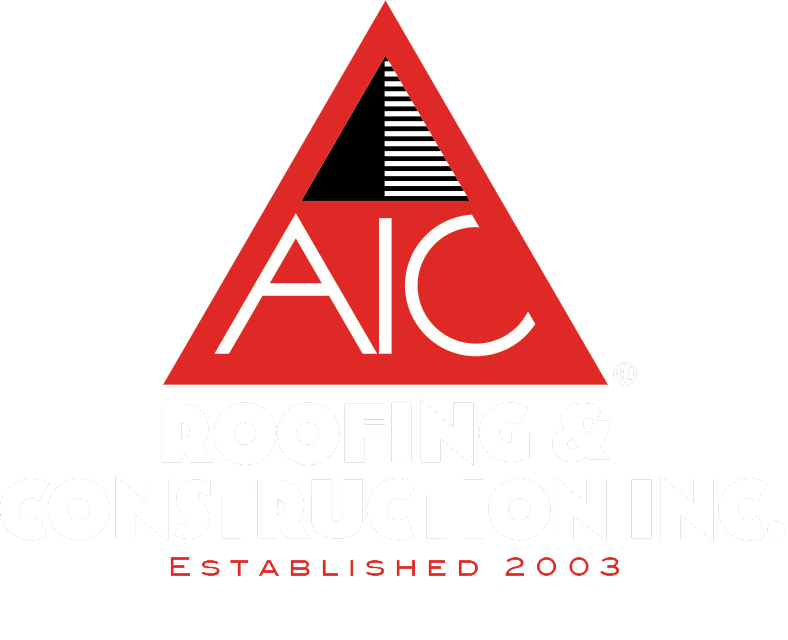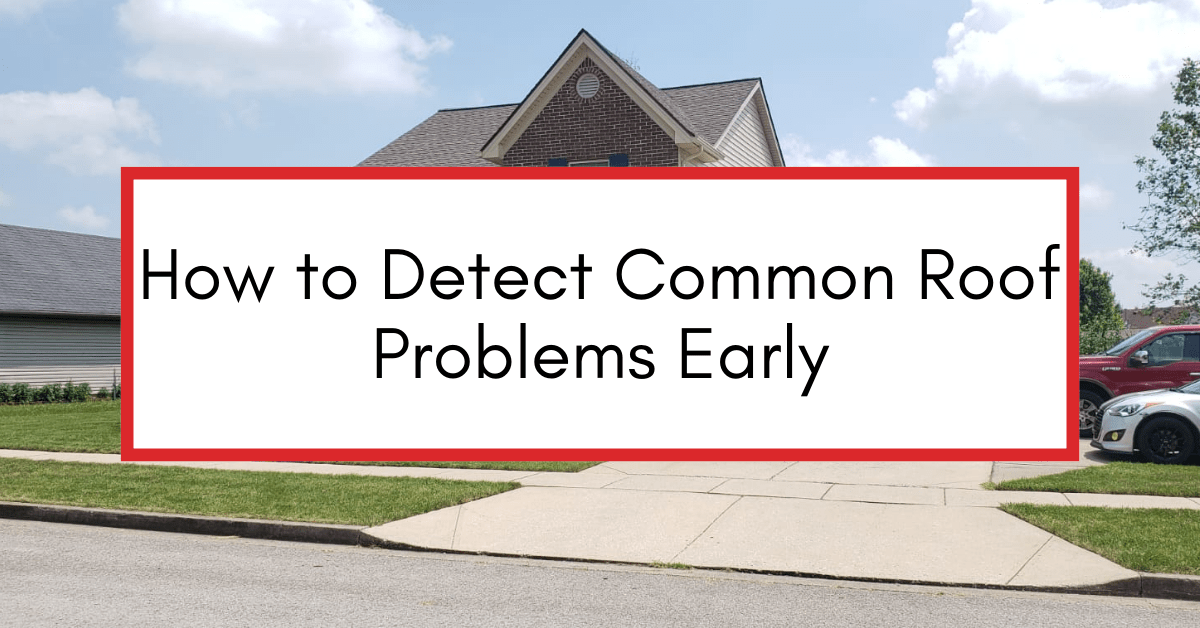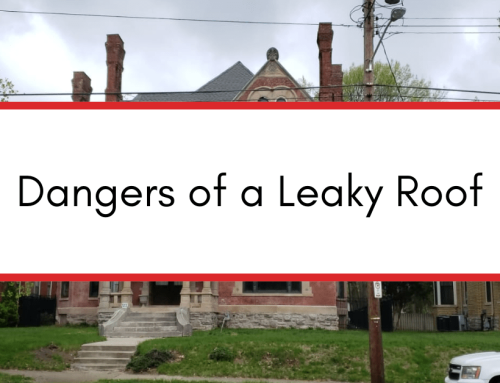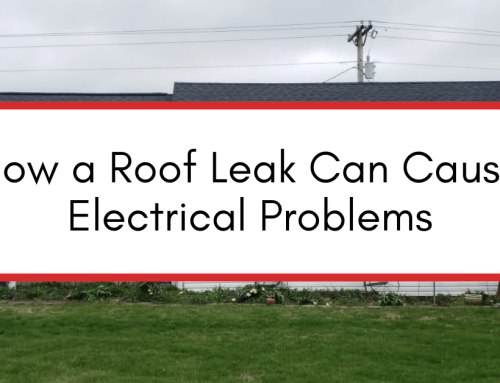Roof problems can be costly and inconvenient to fix, especially if they are left unnoticed and allowed to worsen over time. That’s why it’s crucial to detect common roof problems early on and address them promptly.
At AIC Roofing & Construction, we are on a mission to help educate homeowners about their roofing systems, so they can make confident, informed decisions about their home.
Regular roof inspections are vital in spotting potential issues before they become major headaches. In this article, we will explore the importance of regular roof inspections, how weather and age affect roof condition, how to identify different types of roof problems, the basics of roof maintenance, and hiring professionals for roof inspections. By staying proactive and vigilant, you can ensure the longevity and durability of your roof.
Understanding the Importance of Regular Roof Inspections
A regular roof inspection is the first and most crucial step in detecting roof problems early. It involves a thorough examination of your roof by a trained professional who can identify damage and deterioration. By scheduling regular inspections – we recommend once annually, you can catch potential issues before they escalate into costly repairs or even complete roof replacements.
During a roof inspection, the professional will look for various issues such as missing or damaged shingles, leaks, mold growth, and signs of pest infestation. Identifying these problems early on can help prevent water damage, structural issues, and health hazards within your home.
The Role of Weather in Roof Deterioration
Weather conditions can have a significant impact on your roof’s lifespan. Extreme heat, heavy rain, snow, and wind can all contribute to the wear and tear of your roof. During a roof inspection, the inspector will assess how well your roof has withstood these weather elements and identify any areas that may have been weakened or damaged.
Additionally, prolonged exposure to UV rays from the sun can cause roofing materials to deteriorate faster. This can lead to cracks, warping, and discoloration of the roof surface. Regular inspections can help monitor the effects of weather on your roof and address any issues before they compromise the integrity of your home.
The Impact of Age on Roof Condition
Just like any other part of your home, your roof ages over time. The materials used in the construction of your roof can break down and deteriorate, reducing their effectiveness in protecting your home. With regular inspections, you can stay informed about your roof’s condition and plan for necessary repairs or replacements before it becomes a more significant problem.
As your roof ages, it may also become less energy-efficient, leading to increased heating and cooling costs. Inspecting the insulation and ventilation during a roof inspection can help improve energy efficiency and prolong the lifespan of your roof. Addressing these issues proactively can save you money in the long run and ensure the comfort and safety of your home.
Identifying Different Types of Roof Problems
Roof problems can manifest in various ways, each indicating a different issue that needs to be addressed promptly to prevent further damage. By understanding the signs of common roof problems, homeowners can take proactive steps to maintain the integrity of their roofs and protect their homes.
Signs of Leaks and Water Damage
Perhaps one of the most common roof problems is leaks and water damage. Inspecting your attic for water stains or rotting wood can help you detect a leaky roof. Additionally, water stains on your ceiling or walls can indicate a problem. It’s important to promptly address leaks, as they can lead to structural damage and create an ideal environment for mold growth.
Water damage can be insidious, often starting small and gradually worsening over time. In addition to visible signs of water stains, musty odors in your home can also indicate hidden water damage. Addressing leaks promptly and ensuring proper ventilation in your attic can help prevent water damage and its associated problems.
Spotting Structural Issues: Sagging and Cracks
Structural issues, such as sagging or cracks in your roof, are serious problems that need immediate attention. These issues can compromise the integrity of your entire home, leading to safety hazards. During a roof inspection, a professional can identify any signs of sagging or cracks and recommend the necessary repairs to ensure your roof’s stability.
Sagging areas on your roof can indicate underlying structural damage, which may be caused by issues such as inadequate support or water damage. Cracks in the roof can allow water to seep in, leading to further deterioration of the roof’s structure. Addressing these structural issues promptly is crucial to prevent more extensive damage to your home.
Dealing with Mold and Moss Growth
Mold and moss growth on your roof not only affect its appearance but can also cause significant damage to the underlying materials. During a roof inspection, the inspector will look for any signs of mold or moss growth and provide recommendations on how to mitigate and prevent further damage.
Mold and moss thrive in damp environments, often developing in areas with poor sunlight exposure or trapped moisture. In addition to compromising the structural integrity of your roof, mold and moss growth can also pose health risks to you and your family. Implementing proper drainage and sunlight exposure can help prevent the growth of mold and moss on your roof, preserving its longevity and appearance.
The Basics of Roof Maintenance
Proper roof maintenance is essential for ensuring the longevity and structural integrity of your home. Beyond just aesthetics, a well-maintained roof protects your property from water damage, mold growth, and other costly issues. By following a few key steps, you can keep your roof in top condition for years to come.
Cleaning Your Roof: Necessary Steps
Regular roof cleaning is a fundamental aspect of roof maintenance. Keeping your roof free from debris, such as leaves or branches, prevents clogged gutters, which can lead to water damage. In addition, cleaning your roof removes any potential breeding grounds for mold and algae, helping to prolong its lifespan. It’s not just about appearances; a clean roof is a healthy roof.
When cleaning your roof, it’s important to use the right tools and techniques to avoid damaging the roofing materials. Depending on the type of roof you have, whether it’s shingles, tiles, or metal, different cleaning methods may be required. Always prioritize safety when working at heights and consider hiring professionals for thorough and safe roof cleaning.
The Importance of Gutter Maintenance
Your gutters play a crucial role in protecting your roof by channeling water away from your home’s foundation. Regular gutter maintenance involves cleaning out debris, checking for leaks or loose brackets, and ensuring proper water flow. Neglecting gutter maintenance can result in water pooling on your roof, leading to leaks and damage. By keeping your gutters clean and functional, you can prevent water-related issues and preserve the structural integrity of your home.
Inspecting your gutters at least twice a year, in the spring and fall, can help you catch any issues early on and prevent costly repairs down the line. Consider installing gutter guards to minimize debris buildup and make maintenance easier. Remember, a small investment in gutter maintenance now can save you from major headaches later.
Next Steps – Scheduling Your Free Roof Inspection
Hiring a reputable company for roof inspections is a proactive step towards maintaining the integrity of your roof. By understanding what to expect during an inspection, choosing the right contractor, and comprehending the contents of inspection reports, you can confidently make decisions that will ensure the longevity and durability of your roof. Regular inspections and timely repairs will not only save you from costly expenses but also provide you with peace of mind knowing that your home is protected from the elements.
If you’re ready to schedule your free roof inspection, contact us today!
3-tab attics barns chimney choosing a contractor commercial cost curb appeal DIY estimate financing flashing flat roof GAF glossary gutter replacement gutters gutter size gutter system ice dams inspections insurance missing shingles roof design roofing materials roofing system roof leak roof maintenance roof materials roof repair roof replacement roof shapes roof types shingle ratings shingles siding siding materials siding replacement skylights storm damage underlayment ventilation warranty winter
